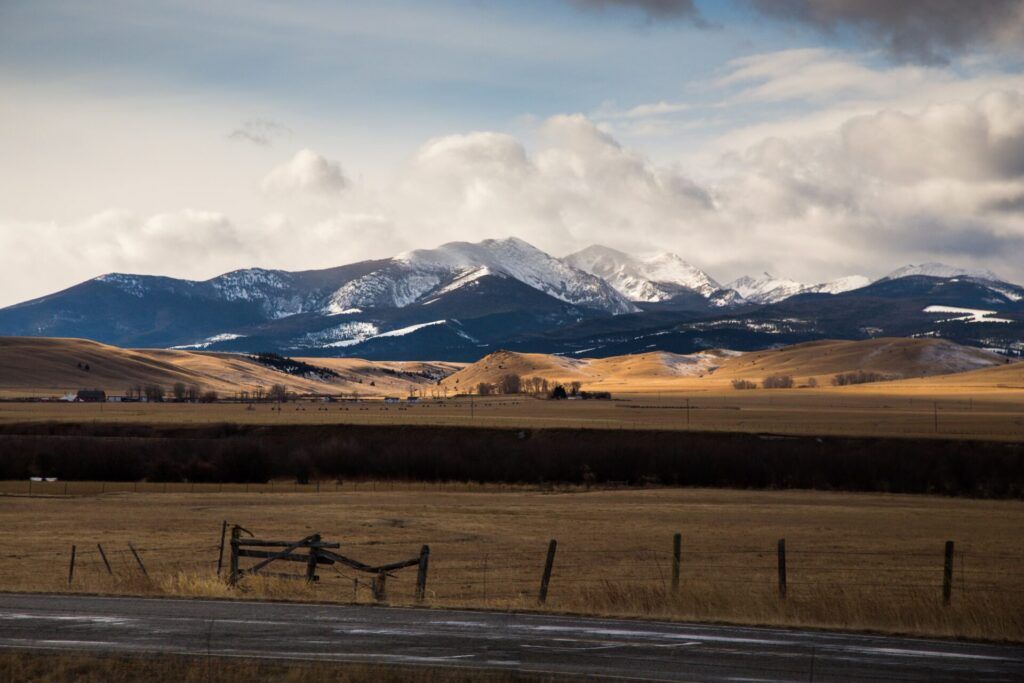Landmark climate trial puts constitutional Green Amendment to the test
By Maya van Rossum | July 6, 2023
 Photo by Matthew Lancaster on Unsplash
Photo by Matthew Lancaster on Unsplash
Montana is home to big skies, wide open spaces, lush forests, and flowing rivers. Recently, 16 young residents challenged the state government to protect themselves and Montana’s natural resources from the ravages of the climate crisis. In a potentially landmark legal case, they pressed to ensure Montana takes responsibility for its contributions to the growing climate crisis.
For a week, the 16 plaintiffs in Held v. Montana testified before a federal court judge in Helena, describing the despair, fear, health harms, and quality of life impacts caused by the climate crisis. Represented by attorneys from Our Children’s Trust and the Western Environmental Law Center and joined by a cadre of nationally and internationally recognized experts on climate, environment, economics, human health, energy, and law, the plaintiffs sought to prove that in Montana, people have an enforceable right to a safe climate.
Although the final ruling could take months, the case is demonstrating the value of having constitutionally protected environmental rights.
Why is this case different? Montana is one of only three states nationwide that has a constitutional Green Amendment. As a result, the people in Montana have an enforceable right to a clean and healthy environment. (The other two states with such provisions are Pennsylvania and New York.) While Green Amendment protections in these states have provided essential protections for water and air quality; have been used to address toxic contamination and environmentally damaging industries; and have helped to protect natural resources important for environmental, economic and community health, the Held case is the first time such an amendment has been explicitly used to try to secure protection of the right to a safe climate.
While the state’s attorneys are framing this case as a “boring” question of law—their word, not mine—the young plaintiffs and their legal counsel are painting a far graver picture. The lives, livelihoods, health, and future of the young people of Montana are at stake, as well as their constitutional entitlement to have their environment meaningfully protected by government officials sworn to safeguard all residents of Montana.
Evidence from the case. The plaintiffs included young Native Americans, ranchers, activists, accomplished fishers and hunters, competitive skiers and runners, and outdoor recreationalists. They testified to the fear, worry, despair, isolation, and vulnerability that climate change has instilled in them. They described the health, family, and cultural impacts resulting from constant wildfire smoke, extreme temperatures, floods, and ecosystem changes. They described fish kills, changing river flows, damaging and even deadly algal blooms, shrinking glaciers, and seasonal changes they have already experienced.
The trial also featured testimony from experts like climate scientist and ecology professor Steve Running; former Interior Department employee and glaciologist Dan Fagre; stream ecologist and waterway expert Jack Stanford; pediatrician Lori Byron; and Mark Jacobson, the director of the Atmosphere & Energy Program at Stanford University. They all confirmed that the climate crisis is upon us, and it is not just affecting the environment, but also harming the physical health, safety, body, and brain development of young people in Montana. Experts like psychiatrist Lise van Susteren testified that awareness and experience of climate change creates tremendous psychological stress resulting in depression, increased suicidal tendencies, more health harms, and even an increased likelihood of early death. The experts made clear that swift action was essential to both prevent climate change from getting worse, and to have the chance of reversing its effects.
Multiple witnesses, including Peter Erickson, a climate change policy researcher for the Stockholm Environment Institute, pointed out that Montana’s state government has actively advanced the fossil fuel industry, the major source of climate changing emissions released in the state. Erickson estimated the fossil fuel industry in Montana is responsible for the release of 166 million tons of carbon dioxide every year.
The case highlighted state actions advancing the ongoing release of climate changing emissions. Among them, the passage by State lawmakers of legislation prohibiting government agencies from considering climate change when weighing actions that might contribute to it. The plaintiffs sought to demonstrate this prohibition on considering the climate impacts of fossil fuel extraction, transport, processing, and use in the state is harming their physical, psychological, cultural and economic stability.
At a time when international experts are warning that the ongoing release of greenhouse gas emissions is causing the climate to change, and despite decades of documentation and evidence presented at trial that Montana government officials were fully aware of the harms of climate change for its people and environments, Montana government officials are intentionally and knowingly implementing policies, programs, and decisions causing the release of massive amounts of greenhouse gas emissions every year and are failing to even consider the ramifications.
While the state was expected to put on a multiday defense at the trial, in the end it rested after just three witnesses testified for less than a day. The two state agency witnesses asserted that, when it came to climate, they were powerless to comply with the constitutional obligation to protect the environmental rights of the people of Montana because the state legislature had not explicitly empowered the Montana Department of Environmental Quality to do so. This was a troubling assertion for many reasons, including legal precedent in all three Green Amendment states (Pennsylvania, New York, and Montana) making clear that compliance with a constitutional obligation to protect environmental rights is not optional for government officials, and that while state law can help guide the interpretation of a constitutional obligation, it cannot displace that obligation.
The state government’s one expert, economist Terry Anderson, was asked to testify only to a few numbers: the global level of greenhouse gas emissions; Montana’s annual greenhouse gas emissions; how the two figures compare; and what percentage of Montana lands are under the control of the federal government and Native American tribes. Despite that limited testimony, the defense had a field day demonstrating that this expert, charging a hefty $500 an hour, had provided demonstrably wrong information in his reports, deposition, and testimony. It was a dramatic end to the seven-day trial.
What’s next? Time and time again the trial testimony referred to the language added to the Montana Declaration of Rights in 1972—i.e. the state’s Green Amendment—which states that the people of Montana have a right to a clean and healthful environment and that Montana’s government officials have a duty to ensure that right is protected. Once issued, Judge Kathy Seeley’s ruling will add to the body of Montana case law applying this constitutional entitlement. It will also inform how constitutional Green Amendment language should be interpreted in other states.
While many states have constitutional language about the environment, most fail to do so in a way that creates the kind of constitutional entitlement of the people that Montana, Pennsylvania, and New York enjoy. Among other things, this case demonstrates that when you have a constitutional amendment that meets the definition of what I call a “Green Amendment” and gives environmental rights the highest constitutional standing and enforceability, there is a pathway for the people to hold the government accountable when it fails to protect those rights.
As the founder of the national movement and organization, Green Amendments for the Generations, I am making the case that securing the passage of a constitutional Green Amendment in every state constitution across our nation, and ultimately at the federal level, is one of the most powerful ways that people can stand up for their environmental rights. It is my fervent hope that when the decision from Judge Kathy Seeley comes down, it clearly and firmly upholds the rights and entitlements that Green Amendments enshrine.
Together, we make the world safer.
The Bulletin elevates expert voices above the noise. But as an independent nonprofit organization, our operations depend on the support of readers like you. Help us continue to deliver quality journalism that holds leaders accountable. Your support of our work at any level is important. In return, we promise our coverage will be understandable, influential, vigilant, solution-oriented, and fair-minded. Together we can make a difference.
Keywords: climate crisis, climate laws, fossil fuels, green amendments, youth climate movement
Topics: Climate Change















Most of the penalty provisions in US federal environmental statues expressly mandate that penalty actions be sufficiently large enough to deter future violations and they also require recovery of the economic benefit of noncompliance; however, EPA generally assesses penalties far too low to deter future violations. The predictable result is that EPA enforcement actions signal polluters that pollution pays.